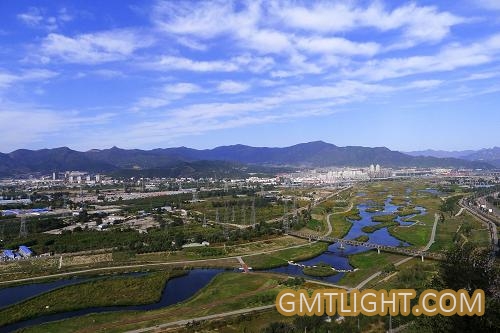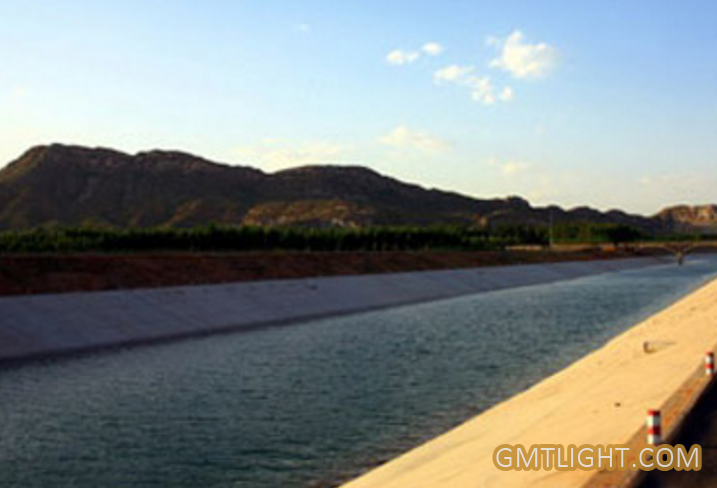"There was a serious water shortage in northern China, and the Yongding River, a famous river in Beijing's history, was almost dry up. It is the South-to-North Water Transfer Project that brings the Yongding River back to its real appearance. I live by the Yongding River and witness its vicissitudes. The Yongding River is so beautiful today. Mr. Niu, Beijing gmtlight

Let's take a look at the wonderful course of the South-to-North Water Transfer Project.
In 1952, Comrade Mao Zedong put forward during his inspection of the Yellow River: "There is more water in the South and less water in the north. If possible, it is also possible to borrow some water." This is also the first time that the grand idea of the South-to-North Water Transfer Project has been put forward.
On February 16, 1953, Mao Zedong visited Wuhan for the first time after the founding of New China. He inspected both sides of the Hanshui River and visited the East Lake by wooden boat. On the Yangtze River, Mao Zedong asked Lin Yishan, "There is more water in the South and less water in the north. Can we borrow some water for the north?" When the ship was approaching Nanjing, Mao Zedong said to Lin Yishan, "The Three Gorges Project will not start for the time being. I'll just get to the bottom first, but the South-to-North Water Transfer Project should be carried out quickly."
In August 1958, the Directive of the Central Committee of the Communist Party of China on Water Conservancy Work was promulgated and the South-to-North Water Transfer Project was formally proposed for the first time.
In 1959, the Chinese Academy of Sciences and the Ministry of Hydropower held a conference on the investigation and research of the South-to-North Water Transfer Project in Beijing. The guidelines for the South-to-North Water Transfer Project were determined as follows:'Storage and diversion should be implemented simultaneously, comprehensive utilization should be taken into account, and both the north and the South should benefit from each other, so as to make up for more and make the best use of the water and the best use of the land'.
In 1979, the Government Work Report adopted by the First Session of the Fifth National People's Congress officially put forward that "the South-to-North Water Transfer Project to divert the Yangtze River water to the north of the Yellow River" should be constructed.
Project Research Theory
In December 1979, the Ministry of Water Resources formally established the South-to-North Water Transfer Planning Office to coordinate the work of the South-to-North Water Transfer nationwide.
In July 1987, the State Planning Commission officially issued a circular, deciding to include the West Route of South-to-North Water Transfer Project in the "Seventh Five-Year Plan" ahead of schedule.
In April 1991, the Fourth Session of the Seventh National People's Congress included the South-to-North Water Transfer Project in the Eighth Five-Year Plan and the Ten-Year Plan.
In October 1992, the 14th National Congress of the Communist Party of China listed the South-to-North Water Transfer Project as one of the backbone projects across the century.
In December 1995, the South-to-North Water Transfer Project began to be fully demonstrated.
On June 5, 2000, the South-to-North Water Transfer Project was planned in an orderly manner. After decades of research, the overall pattern of the South-to-North Water Transfer Project was set as three routes, namely, the West, Middle and East routes, which diverted water from the upper, middle and lower reaches of the Yangtze River basin.
Project approval period
On October 10, 2002, the Standing Committee of the Political Bureau of the CPC Central Committee considered and adopted the General Plan for the South-to-North Water Transfer Project approved by the State Council.
On December 23, 2002, the State Council formally approved the General Plan for South-to-North Water Transfer.
Construction period
On December 27, 2002, the South-to-North Water Transfer Project was officially started. The santongbao project in Jiangsu section and the Jiping main canal project in Shandong section have become the first batch of construction projects of the east line of the south to North Water Transfer Project.
On December 30, 2003, the construction of the emergency water supply project in Jingshi section of the middle route of South-to-North Water Transfer Project started, marking the formal start of the first phase of the middle route of South-to-North Water Transfer Project.
On September 26, 2005, the landmark project of the Middle Route of South-to-North Water Transfer Project and the control project of Danjiangkou Reservoir, the water source area of the Middle Route, the dam heightening project of Danjiangkou, were officially started, marking the full implementation of the Middle Route of South-to-North Water Transfer Project.
On September 28, 2008, the emergency water supply project of Beijing-Shijiazhuang section of the middle route of South-to-North Water Transfer Project was completed.
On November 25, 2008, Hubei Province held a mobilization Conference on the pilot migration work in Danjiangkou Reservoir Area in Wuhan, marking the start of the pilot migration work in Danjiangkou Reservoir Area on the middle route of South-to-North Water Transfer Project.
On February 26, 2009, the construction of Xinglong Water Conservancy Project on the middle route of the South-to-North Water Transfer Project started, marking the start of all seven provinces and municipalities of the East and middle route of the South-to-North Water Transfer Project.
On March 31, 2010, 54 dam sections of the Danjiangkou Dam were all raised to the top, marking a major stage victory for the Danjiangkou Dam heightening project, the source of the middle line.
In September 2012, the relocation of the Danjiangkou Reservoir in the middle route of the South-to-North Water Transfer Project was completed in an all-round way.
Test run acceptance period
On May 31, 2013, the first phase of the East Route of the South-to-North Water Transfer Project was successfully commissioned in Jiangsu Province.
On August 15, 2013, the first phase of the East Route of the South-to-North Water Transfer Project passed the acceptance of the whole route, and the project has the conditions for water access.
On August 28, 2013, the final acceptance of resettlement in Danjiangkou Reservoir Area, the middle route of the South-to-North Water Transfer Project, was formally passed before impoundment, marking the complete completion of the tasks related to resettlement in the Reservoir Area before impoundment.
On August 29, 2013, the Danjiangkou dam heightening project passed the acceptance of water storage, and formally met the conditions for water storage.
On November 15, 2013, the first phase of the Eastern Route Project was officially opened to water.
On December 25, 2013, the main project of the central line was basically completed, which laid the foundation for the water supply of the whole line.
On June 5, 2014, the filling test of the main canal north of the Yellow River in the middle line began.
On July 3, 2014, the filling test of the main canal south of the Middle Yellow River began.
On September 15, 2014, the water filling test of the tunnel of the Yellow River Crossing Project was successful.

On September 29, 2014, the first phase of the mid-line project passed the acceptance of the whole line and met the conditions for water access.
On December 12, 2014, the first phase of the midline project was officially opened to water.




